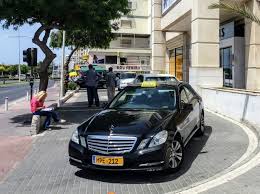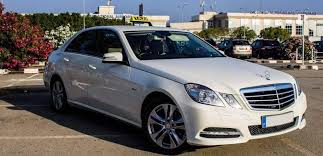
If you’re planning a trip from Larnaca to Ayia Napa, this practical guide will help you choose the best transport option, estimate travel time, and find top things to do on arrival. For a reliable pre-booked transfer directly from the airport to your hotel or resort, consider checking this service: larnaca to ayia napa https://taksi-kipr.com/transfers/larnaca-ayia-napa/
Distance and travel time: Larnaca and Ayia Napa are separated by roughly 40–50 km (about 25–31 miles) depending on your exact starting and ending points. From Larnaca International Airport to central Ayia Napa the drive typically takes between 35 and 50 minutes under normal traffic conditions. Travel time increases during holiday peak periods, summer weekends, and special events.
Transport options overview:
– Bus: Intercity and local buses connect Larnaca with Ayia Napa. Buses are the most economical choice, ideal for solo travelers and budget-conscious visitors. Expect multiple daily departures in peak season; schedules are less frequent at night and in winter.
– Taxi and private transfers: Taxis provide door-to-door service and convenience, especially with luggage or late-night arrivals. A fixed-price or metered fare will be higher than the bus but much faster. Private transfers can be pre-booked for fixed rates, offering reliability and meet-and-greet service at the airport.
– Rental car: Renting a car gives maximum flexibility to explore the area, nearby beaches, and attractions like Cape Greco. Roads are generally good, but remember Cyprus drives on the left. Factor in parking availability and fuel costs.
– Shuttle and shared rides: Some hotels and transfer companies operate shuttles or shared transfers. These are often cheaper than private taxis but may take longer due to multiple stops.
Cost expectations (approximate): Bus fares are typically low, often under €5 per person for intercity routes. Taxis and private transfers from Larnaca Airport to Ayia Napa often range from €35 to €60 depending on time of day and luggage; pre-booked transfers may offer set prices. Rental car daily rates vary widely by season and vehicle class; consider booking in advance during summer.
Best routes and driving tips: The quickest route from Larnaca to Ayia Napa usually follows the A5/A3 and then local coastal roads toward Ayia Napa. Use a reliable map or GPS, watch for local traffic conditions, and be mindful of speed limits. Cyprus has clear signage in English, but parking in busy summer months can be tight near popular beaches and clubs.
Where to go and what to do in Ayia Napa:
– Beaches: Nissi Beach is famous for its white sand and lively atmosphere; Makronissos and Kermia are more family-friendly; Konnos Bay and Fig Tree Bay (nearby in Protaras) are excellent for swimming and snorkeling.
– Water activities: Jet-skiing, parasailing, diving, and boat trips to secluded coves and the Blue Lagoon are popular. The area has many dive centers offering guided dives and courses for different experience levels.
– Natural attractions: Cape Greco National Forest Park offers dramatic sea cliffs, scenic walking trails, the Sea Caves, and prime spots for photography and sunset views.

– Nightlife and dining: Ayia Napa is known for vibrant nightlife, bars, and clubs, but it also has quiet tavernas and seafood restaurants where you can enjoy fresh Mediterranean cuisine.
– Family activities: The area hosts water parks, family-friendly beaches, and easy boat excursions suitable for children.
When to go: The prime beach season runs from late May through September. May-June and September-October are ideal for pleasant weather, fewer crowds, and more affordable accommodation. Winter months are quieter and cooler, with some attractions and services reduced.
Practical travel tips:
– Currency: Euro. ATMs and card acceptance are widespread, but small vendors may prefer cash.
– Driving: Cyprus drives on the left side of the road. If you rent a car, familiarize yourself with local rules and always carry your licence and insurance documents.
– Luggage and transfers: If you arrive at Larnaca Airport with heavy luggage, a taxi or pre-booked transfer can save time and effort. Confirm luggage allowances with shuttle services.
– Safety and health: Ayia Napa is generally safe for tourists. Keep standard precautions with valuables and sun protection. Stay hydrated and use sunscreen during summer months.
– Book ahead in high season: Ferries, excursions, and popular restaurants can fill up in July–August, so reserve in advance where possible.
Planning your itinerary: For a short stay, prioritize a beach day, a boat trip, and a sunset visit to Cape Greco. For longer visits, add diving sessions, a day trip to Protaras, or explore nearby cultural sites such as the medieval monasteries and local museums. Combining a rental car with local guided excursions gives the best balance between independent exploration and expert-led experiences.
Accessibility and family considerations: Many main beaches have facilities for families and some accessibility features, but not all areas are wheelchair-friendly. If accessibility is a priority, check with beaches, hotels, and transfer companies ahead of time to ensure appropriate arrangements.
Sustainable travel suggestions: Respect local environments by avoiding litter, following marked trails in natural parks, and choosing providers that follow sustainable practices for boat trips and marine activities. Local conservation efforts focus on protecting marine life and nesting sites, so be considerate around restricted areas.
Final advice: Whether you prefer the budget-friendly bus, the convenience of a taxi, or the freedom of a rental car, the journey from Larnaca to Ayia Napa is short and straightforward. Balance convenience with cost, plan ahead in peak season, and leave time to enjoy the beaches, seafood, and coastal scenery that make Ayia Napa a standout destination in Cyprus.
